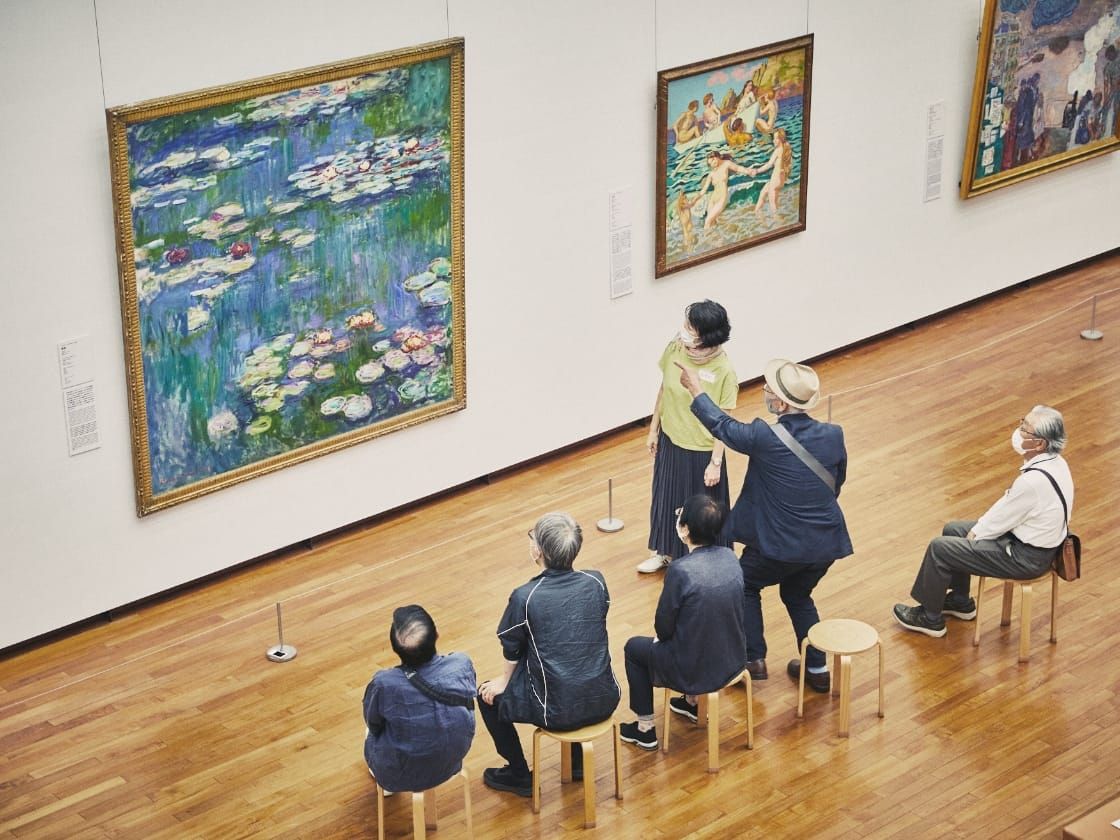2025.10.03
Report【NCAR Workshop 005】“Repair of Torn Canvas using Single Thread Bonding” conducted
On August 6, 2025, “Repair of Torn Canvas using Single Thread Bonding” was held at the main conference room of the National Center for Art Research.
Mr. Haze Hiroshi, representative of Haze Painting Studio and the lecturer of the workshop, introduced a conservation technique “Single Thread Bonding,” which repairs torn canvas by individually reconnecting severed fibers.
Thirty specialists, of which the most of them were oil painting conservators, participated after pre-registering.
Mr. Haze participated in a five-day workshop on canvas painting conservation held at the Art Gallery of New South Wales in Sydney in 2024. This workshop was part of the Getty Conservation Institute's Conserving Canvas Initiative (Conserving Canvas Initiative | Getty Projects), where he acquired the Single Thread Bonding technique. Through the link, you can refer a report on the application of Single Thread Bonding to an actual artwork: National Center for Art Research, Japan|Reports | Repair of Torn Canvas Using Single Thread Bonding.
In Japan, the restoration technique known as “kakehagi” has traditionally been used to repair torn canvases. Kakehagi involves bridging and bonding another piece of fabric or thread to the reverse of the canvas. This method has left some issues unresolved, such as the use of a large amount of adhesive and the creation of uneven surfaces on the painting. Single Thread Bonding, on the other hand, is a restoration technique that meticulously reshapes the fibers through careful deformation correction to restore the original form as much as possible. It then repairs only the deficient areas using a minimal amount of adhesive (sometimes supplemented with new thread or fabric). With this method, the repaired section will be visually indistinguishable, without creating unnecessary unevenness on the canvas.
Mr. Haze provided slide explanations supplemented with practical videos, followed by a demonstration of the tool kits provided in Sydney workshop and other tools he had personally crafted and adapted. Furthermore, he detailed the specifications of the “Trecker device” for canvas deformation correction—a technique he learned in Sydney alongside Single Thread Bonding—accompanied by a live demonstration.
Participants shared feedback such as: “My understanding of bonding methods and adhesive selection has broadened.” “It was invaluable to learn about the most appropriate bonding methods and adhesives for repairing torn or cut canvases, supported by extensive slides and videos alongside the latest research findings. Seeing the actual Trecker device, tools, and materials made me want to order them immediately for practice and application.” “The concrete content was easy to understand. The demonstration videos were very helpful. I feel I can apply this immediately in my restoration work.”
The workshop proved highly meaningful as Japanese conservation specialists dealing with canvas—who rarely gather together—actively exchanged information and engaged in discussions.
Hidaka Midori (National Center for Art Research)
Mr. Haze Hiroshi, representative of Haze Painting Studio and the lecturer of the workshop, introduced a conservation technique “Single Thread Bonding,” which repairs torn canvas by individually reconnecting severed fibers.
Thirty specialists, of which the most of them were oil painting conservators, participated after pre-registering.
Mr. Haze participated in a five-day workshop on canvas painting conservation held at the Art Gallery of New South Wales in Sydney in 2024. This workshop was part of the Getty Conservation Institute's Conserving Canvas Initiative (Conserving Canvas Initiative | Getty Projects), where he acquired the Single Thread Bonding technique. Through the link, you can refer a report on the application of Single Thread Bonding to an actual artwork: National Center for Art Research, Japan|Reports | Repair of Torn Canvas Using Single Thread Bonding.
In Japan, the restoration technique known as “kakehagi” has traditionally been used to repair torn canvases. Kakehagi involves bridging and bonding another piece of fabric or thread to the reverse of the canvas. This method has left some issues unresolved, such as the use of a large amount of adhesive and the creation of uneven surfaces on the painting. Single Thread Bonding, on the other hand, is a restoration technique that meticulously reshapes the fibers through careful deformation correction to restore the original form as much as possible. It then repairs only the deficient areas using a minimal amount of adhesive (sometimes supplemented with new thread or fabric). With this method, the repaired section will be visually indistinguishable, without creating unnecessary unevenness on the canvas.
Mr. Haze provided slide explanations supplemented with practical videos, followed by a demonstration of the tool kits provided in Sydney workshop and other tools he had personally crafted and adapted. Furthermore, he detailed the specifications of the “Trecker device” for canvas deformation correction—a technique he learned in Sydney alongside Single Thread Bonding—accompanied by a live demonstration.
Participants shared feedback such as: “My understanding of bonding methods and adhesive selection has broadened.” “It was invaluable to learn about the most appropriate bonding methods and adhesives for repairing torn or cut canvases, supported by extensive slides and videos alongside the latest research findings. Seeing the actual Trecker device, tools, and materials made me want to order them immediately for practice and application.” “The concrete content was easy to understand. The demonstration videos were very helpful. I feel I can apply this immediately in my restoration work.”
The workshop proved highly meaningful as Japanese conservation specialists dealing with canvas—who rarely gather together—actively exchanged information and engaged in discussions.
Hidaka Midori (National Center for Art Research)







